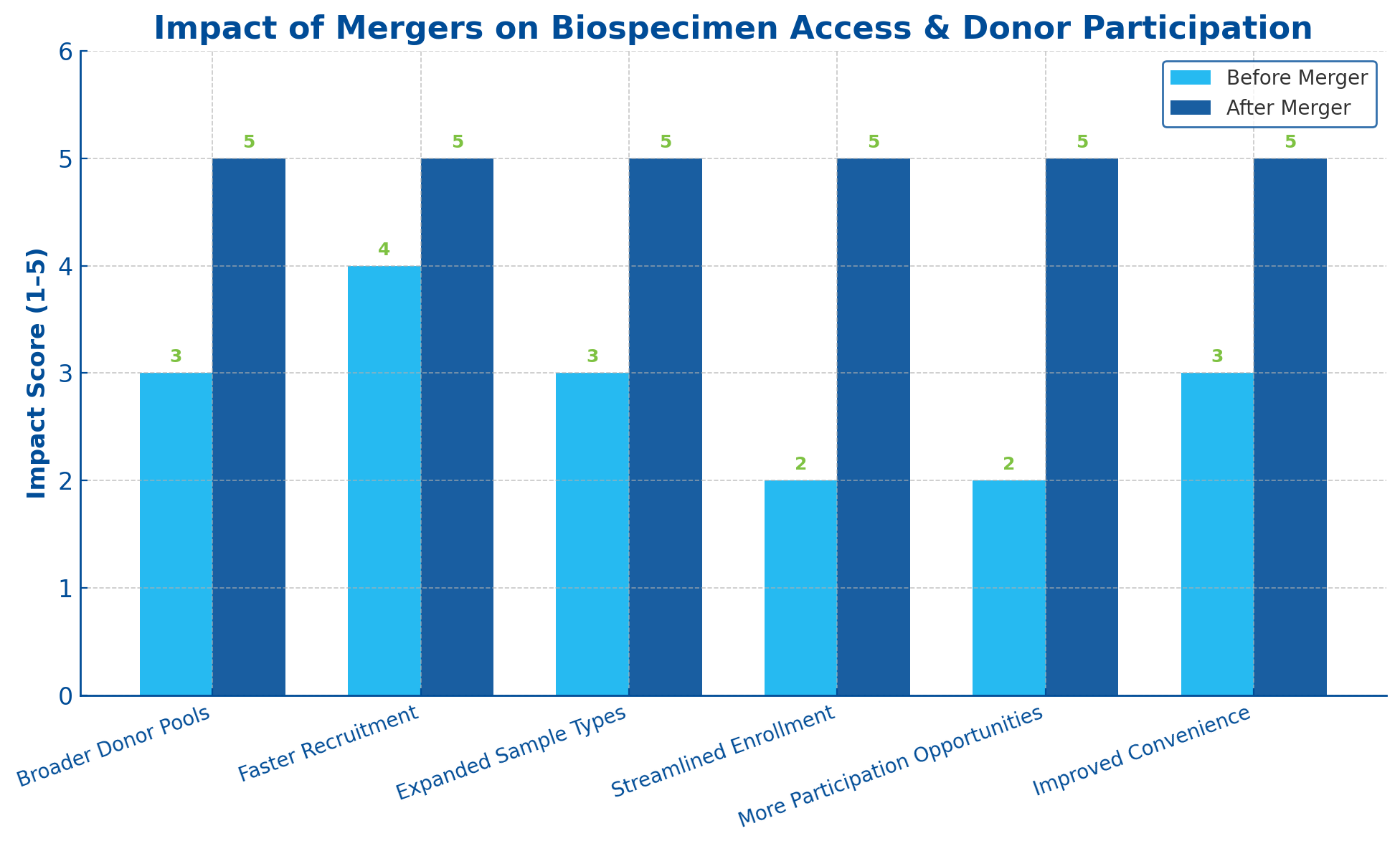Impact of Mergers in the Biospecimen Industry
Written by: BioSample Connect Staff

In the fast-moving world of biomedical research, access to high-quality biospecimens is the lifeblood of discovery. Yet researchers often face barriers—limited geographic reach, fragmented networks, inconsistent logistics, and varying regulatory standards. At the same time, donors—whose participation makes all research possible—sometimes encounter unclear communication, lengthy enrollment processes, or a lack of follow-up on how their contribution made a difference.
Mergers in the biospecimen space are changing that.
The Power of Scale in Biospecimen Access
When two biospecimen organizations join forces, they combine their geographic footprints, site networks, and disease-state coverage. This means researchers gain:
-
Broader Donor Pools: Merged networks can access more diverse patient populations across regions and disease types.
-
Faster Recruitment: Consolidated site activation processes reduce the time from project approval to first collection.
-
Expanded Sample Types: A larger operational base often means the ability to offer more specimen formats—tissue, whole blood, biofluids, and more—collected under standardized protocols.
In short, scale translates into speed, diversity, and quality—three pillars of effective biospecimen procurement.
A Better Experience for Donors
While mergers benefit researchers, they can be transformative for donors too. By merging capabilities, organizations can:
-
Streamline Enrollment: Unified consent platforms and medical record systems mean donors don’t need to re-enroll for each study.
-
Offer More Opportunities to Participate: A wider range of active studies allows donors to contribute more often, in ways that fit their comfort level.
-
Enhance Communication: Centralized outreach ensures donors are informed at every step—from eligibility screening to post-donation updates.
-
Improve Convenience: More collection sites, mobile phlebotomy options, and flexible scheduling make participation easier than ever.
Mergers don’t just connect donors with more research opportunities—they create an ecosystem where participation is more rewarding and accessible.
The Technology Effect
Many recent mergers bring together not just operational networks but also advanced technology platforms. These platforms can match donors to studies in real time, track biospecimen movement, and securely integrate medical records—all while maintaining compliance with HIPAA, GDPR, and IRB standards.
The result? A more connected and transparent research pipeline, where both scientists and donors benefit from faster timelines, better data, and stronger trust.
Looking Forward
As the biospecimen industry continues to evolve, mergers will play a critical role in bridging the gap between scientific demand and patient participation. The combination of scale, technology, and donor-centered design creates a future where:
-
Every researcher has timely access to the right biospecimen.
-
Every donor can participate in research with confidence, convenience, and purpose.
When done thoughtfully, mergers don’t just create bigger companies—they create better pathways from the clinic to the lab bench and ultimately to the therapies that change lives.
